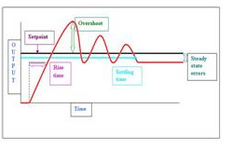Droop mode is the default for standby.
The no-load frequency is either 61.8 Hz or 51.5 Hz, dropping to 60 Hz or 50 Hz respectively at full load.
You must be looking at a set rated above 100 KVA.
I have installed dozens of standby sets and I cannot remember a set under 100 KVA that had a governor option to run in isochronous mode.
The speed of an induction motor varies about 2.8% from no load to full load.
I have never had a customer even notice the slight additional speed variation running on a generator in droop mode.
Droop mode is the Proportional of PID control. P--
Isochronous is Integral of PID control. PI-
And the first response of the governor is always a proportional response.
When the governor has responded in droop mode to a change in load, the Integral or Isochronous feature detects the error between the set point and the actual speed and slowly corrects back to the set point.
Compare the action:
Isochronous:, A motor is running at rated frequency/speed. The load on the set is increased and the motor frequency/speed drops below the rated frequency until the integral feature makes a correction.
Droop: A motor is running at slightly above rated frequency/speed. The load on the set is increased and the motor frequency/speed drops, but remains above rated frequency/speed.
Note #1. Both modes initially respond in droop mode and the frequency will typically drop below nominal rated frequency as the droop responds.
Note #2. When the application of a relatively large load pulls the frequency down below the nominal frequency by more than 3 Hz, ie: below 47 Hz or 57 Hz, the UFRO feature of the AVR becomes active to avoid the motors becoming magnetically saturated.
This is a feature of the AVR and applies for both droop and isochronous.
In control jargon, 3% droop would be described as 3% Proportional plus 3% offset.


![[bigsmile] [bigsmile] [bigsmile]](/data/assets/smilies/bigsmile.gif) .
.